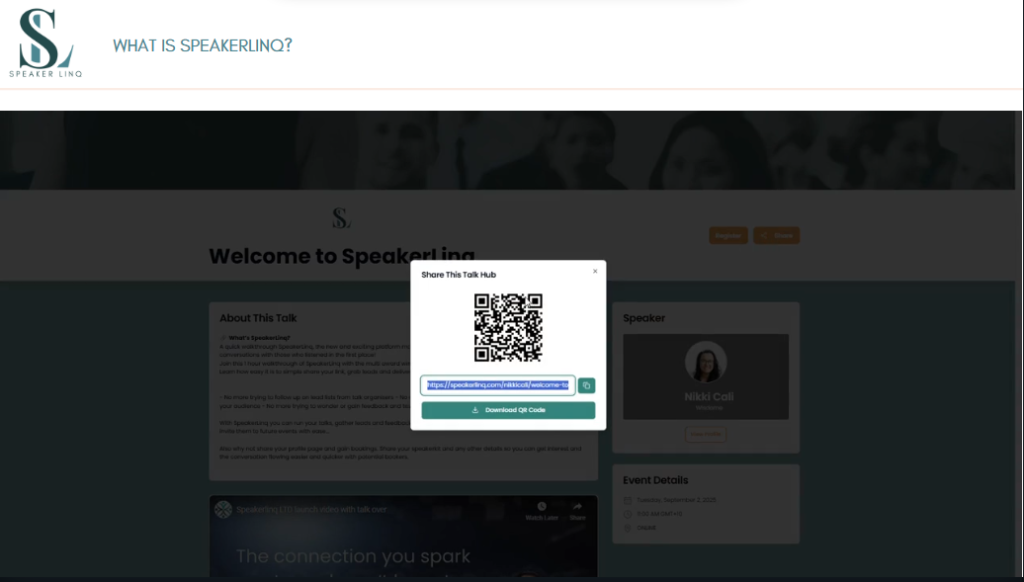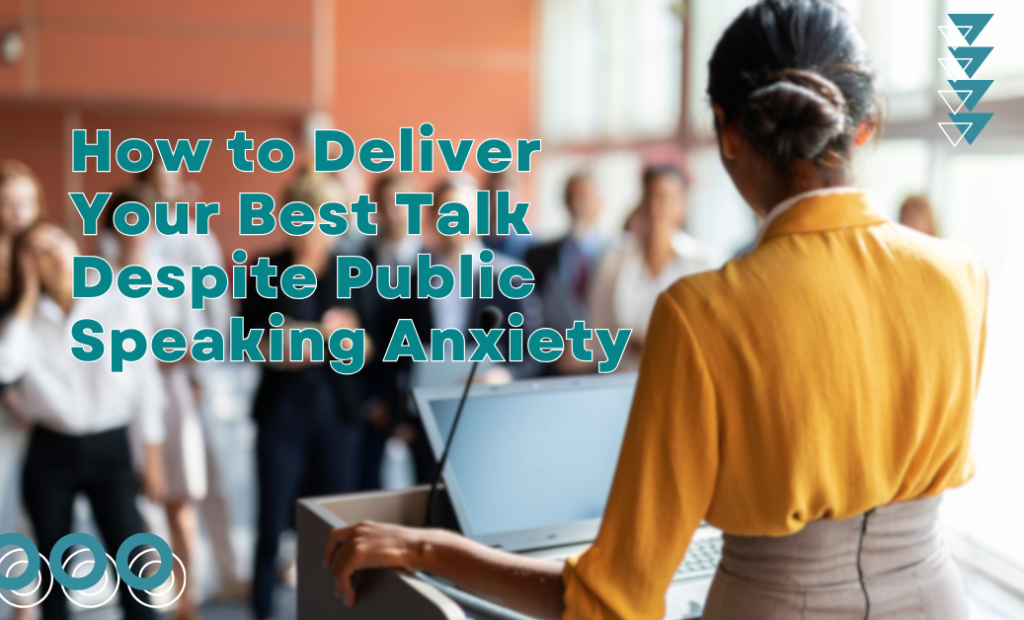Have you ever experienced public speaking anxiety before stepping up to a microphone? Your heart is racing, your palms are sweating, and your voice is shaking while you try to remember your opening lines and focus on the audience. Public speaking anxiety is more common than you might think. Researchers call it glossophobia, and studies show it is one of the most widespread fears in the world.
In fact, surveys reveal that many people fear public speaking more than death itself. As extreme as that sounds, it shows just how overwhelming performance anxiety can feel when all eyes are on you.
The good news is that experiencing public speaking anxiety does not mean you are a poor speaker. In this article, we’ll explain why public speaking anxiety happens, share practical ways to manage nervousness before a speech, and outline expert strategies to help you deliver your best talk with confidence and presence.
Understanding Public Speaking Anxiety
Public speaking anxiety is your body’s fight-or-flight response kicking in at the worst possible time. But why does it happen?
Much of it comes from performance anxiety, the internal pressure to be perfect and avoid judgment. Think about it: the moment you imagine forgetting your lines, stumbling over words, or facing blank stares from the audience, your brain senses danger. Adrenaline floods your body, causing physical symptoms such as:
- Shaky voice
- Trembling hands
- Dry mouth
- Mental block
Preparing to Calm Nerves Before Speaking
There is a famous Latin quote, “Amat victoria curam,” which means “Victory favours the prepared.” When it comes to public speaking anxiety, preparation is the most powerful way to calm nerves.
Knowing your material inside out reduces the fear of forgetting or stumbling. Instead of feeling trapped by anxiety, you gain the freedom to adapt if you lose your place.
Here are a few practical ways to prepare so your confidence shines through:
Structure Your Talk
Think of your presentation like a roadmap, which should have an opening, main points, and a closing. When you know the journey, even if you get lost for a moment, you can quickly find your way back. A clear structure not only eases anxiety but also helps your audience follow and remember your message.
Memorise Your Opening Lines
The first few moments set the tone. Are you starting with a story, a surprising statistic, or a thought-provoking question? Know it by heart. A strong opening anchors you, reduces the chance of freezing, and helps you step into the spotlight with confidence. Professional speakers rely on this technique to manage performance anxiety.
Rehearse Out Loud
Silent reading will not prepare you for the real thing. Practise out loud to get used to rhythm, tone, and pacing. Here are a few more ideas:
- Use a timer to stay within your slot.
- Rehearse in front of a trusted friend.
- Record yourself to notice habits like filler words, rushed sentences, or fidgeting.
These small adjustments can significantly reduce stage fright and boost confidence.
Strategies to Deliver Your Best Talk Despite Public Speaking Anxiety
So, what does it take to make sure your audience remembers your message and stays engaged? Here are five practical strategies to help you speak with confidence, even when public speaking anxiety shows up.
We have also put these tips together in a quick video. If you prefer to watch, click the video below:
1. Own the First Two Minutes
The first two minutes are critical, especially if you are feeling anxious. People form a first impression within seven seconds.
Start strong by planting your feet firmly, standing tall, and letting your presence fill the room. Use a confident opening:
- A compelling story
- A surprising statistic
- A question to spark curiosity
Knowing your opening by heart reduces nerves. Nail those first moments, and you will feel grounded while your audience relaxes into your presence.
2. Control Your Pace and Pauses
Rushing is a common symptom of public speaking anxiety. Speaking too fast can confuse your audience and weaken your message.
The solution is to slow down and embrace pauses. Pausing for two or three seconds might feel uncomfortable, but it signals confidence to your listeners. Pauses also help your audience process key points.
Tip: Mark pauses in your script or use a slash (/) as a reminder to take a breather. Practising slightly slower than normal makes your delivery measured, clear, and persuasive.
3. Command the Room With Eye Contact
Eye contact is a powerful way to build connection and reduce nerves.
- In person: Scan the room and hold eye contact with individuals for three to five seconds.
- Online: Look directly into the camera, not your slides or video feed.
Proper eye contact builds trust, makes your audience feel included, and communicates confidence even if you feel nervous inside.
4. Lead With Your Body
Your body language has the power to either amplify or undermine your words. For speakers dealing with public speaking anxiety, this is where small adjustments can make a big difference.
Consider the following:
- Stand tall, shoulders relaxed, chin level, feet grounded.
- If seated, sit upright with both feet on the floor.
- Use gestures to emphasise points, such as open palms or hand movements.
- Step forward to highlight key messages.
Avoid pacing, rocking, or fidgeting, which signals nervousness. Intentional movement projects calm authority and reinforces your speech.
5. Engage the Audience Directly
Nothing eases public speaking anxiety like audience engagement. Interaction shifts focus away from you and creates a shared experience.
Tips to make your audience feel seen and heard:
- Use Names: Mention people when responding to questions.
- Read the Room: Watch facial expressions and reactions, clarify when needed, and affirm understanding.
- Ask Small Questions: Quick shows of hands or turn-to-your-neighbour discussions invite participation without pressure.
- Acknowledge Contributions: Thank people for their ideas and connect them to your message.
- Break the Fourth Wall: Move closer to your audience or, online, look directly into the camera.
- Inject Variety: Use stories, humour, or thought-provoking questions to reset attention.
These strategies keep your audience engaged and reinforce your connection with them.
Conclusion:
We’ve explored powerful ways to overcome public speaking anxiety, but the real change happens when you put them into action. Start with one strategy, maybe rehearsing your opening lines or pausing with purpose, and notice the difference it makes.

Your talk may end when the stage lights go out, but your impact doesn’t have to. SpeakerLinq gives your presentation a life beyond the applause. It’s your personal hub to share resources, contact information, and special offers.
Grab the lifetime deal available until September 2025 and turn every presentation into a lasting influence.







